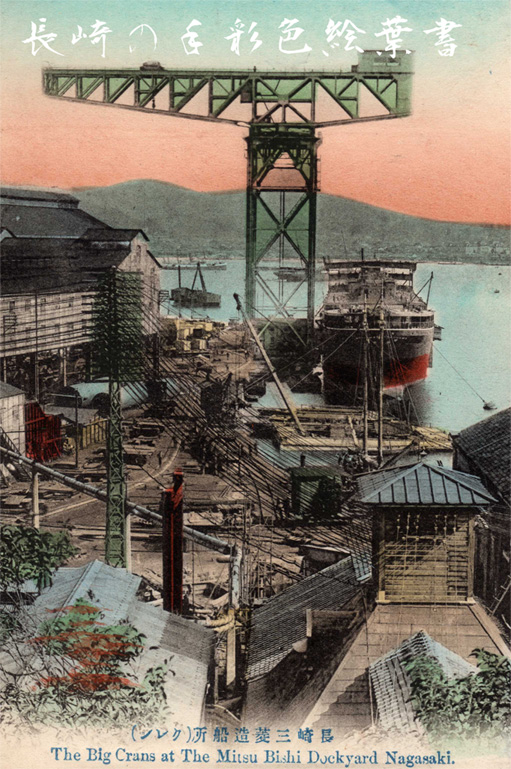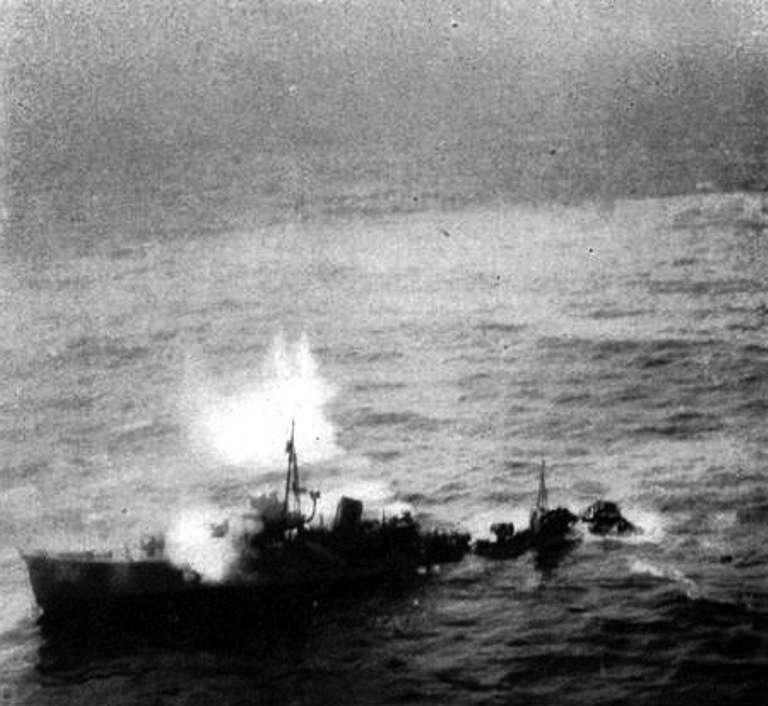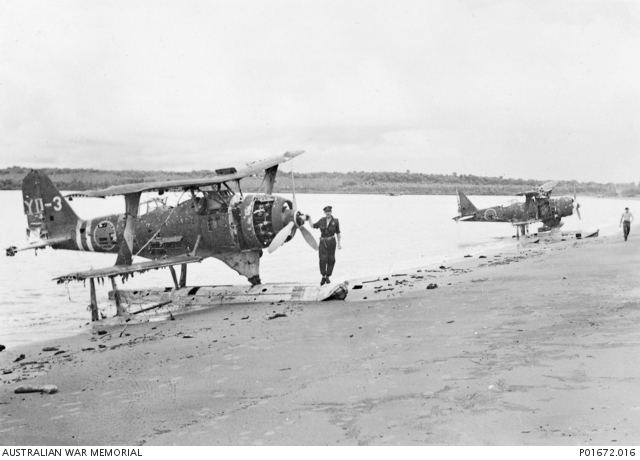|
Tone-class Cruiser
The two were the last heavy cruisers completed for the Imperial Japanese Navy. The ''Tone''-class cruisers were originally envisaged as the 5th and 6th vessels in the . However, by the time construction began, serious weaknesses in the ''Mogami''-class hull design had become clear following the Fourth Fleet incident in 1935. As Japan no longer was obligated to abide by the limitations of the London Naval Treaty, a new design was created and new means of construction were utilized. Although the external dimensions were close to the ''Mogami'' class, the design was quite different, with all the main battery of guns placed forward of the bridge, reserving the entire stern area as a large seaplane operations deck. Unlike the U.S. Navy, the Japanese did not have a dual role attack/scout aircraft, nor did they assign any of their carrier aircraft to a reconnaissance role. Little emphasis was placed on this aspect of carrier warfare. Instead the Japanese reserved all of their carrie ... [...More Info...] [...Related Items...] OR: [Wikipedia] [Google] [Baidu] |
Mitsubishi Heavy Industries
is a Japanese multinational engineering, electrical equipment and electronics corporation headquartered in Tokyo, Japan. MHI is one of the core companies of the Mitsubishi Group and its automobile division is the predecessor of Mitsubishi Motors. MHI's products include aerospace and automotive components, air conditioners, elevators, forklift trucks, hydraulic equipment, printing machines, missiles, tanks, power systems, ships, aircraft, railway systems, and space launch vehicles. Through its defense-related activities, it is the world's 23rd-largest defense contractor measured by 2011 defense revenues and the largest based in Japan. History In 1857, at the request of the Tokugawa Shogunate, a group of Dutch engineers were invited, including Dutch naval engineer Hendrik Hardes, and began work on the ''Nagasaki Yotetsusho'' 長崎鎔鉄所 , a modern, Western-style foundry and shipyard near the Dutch settlement of Dejima, at Nagasaki. This was renamed ''Naga ... [...More Info...] [...Related Items...] OR: [Wikipedia] [Google] [Baidu] |
Japanese Torpedo Boat Tomozuru
was one of four s of the Imperial Japanese Navy (IJN). It capsized in a storm on 12 March 1934, shortly after its completion. This incident forced the IJN to review the stability of all recently completed, under construction and planned ships. It was salvaged and put back into service after extensive modifications. During World War II, the ''Tomozuru'' fought in the Battle of the Philippines and in the Dutch East Indies campaign as an escort, and it continued to play that role for the rest of the war. The ''Tomozuru'' Incident In February 1934, ''Tomozuru'' joined the 21st Torpedo Flotilla at Sasebo. *01:00, 12 March 1934, ''Tomozuru'' departed from Sasebo for a night torpedo exercise with the light cruiser and torpedo boat . *03:25, because of stormy weather, ''Tatsuta'' ordered the other two boats to return to base. *03:58, radio contact lost with ''Tomozuru''. Possible loss of power or radio capability. *04:12, ''Tomozuru''s lights disappeared, presumably this is when it cap ... [...More Info...] [...Related Items...] OR: [Wikipedia] [Google] [Baidu] |
Nagasaki, Nagasaki
is the capital and the largest city of Nagasaki Prefecture on the island of Kyushu in Japan. It became the sole port used for trade with the Portuguese and Dutch during the 16th through 19th centuries. The Hidden Christian Sites in the Nagasaki Region have been recognized and included in the UNESCO World Heritage List. Part of Nagasaki was home to a major Imperial Japanese Navy base during the First Sino-Japanese War and Russo-Japanese War. Near the end of World War II, the American atomic bombings of Hiroshima and Nagasaki made Nagasaki the second and, to date, last city in the world to experience a nuclear attack (at 11:02 am, August 9, 1945 'Japan Standard Time (UTC+9)'). , the city has an estimated population of 407,624 and a population density of 1,004 people per km2. The total area is . History Nagasaki as a Jesuit port of call The first contact with Portuguese explorers occurred in 1543. An early visitor was Fernão Mendes Pinto, who came from Sagres on ... [...More Info...] [...Related Items...] OR: [Wikipedia] [Google] [Baidu] |
Radar
Radar is a detection system that uses radio waves to determine the distance (''ranging''), angle, and radial velocity of objects relative to the site. It can be used to detect aircraft, ships, spacecraft, guided missiles, motor vehicles, weather formations, and terrain. A radar system consists of a transmitter producing electromagnetic waves in the radio or microwaves domain, a transmitting antenna, a receiving antenna (often the same antenna is used for transmitting and receiving) and a receiver and processor to determine properties of the objects. Radio waves (pulsed or continuous) from the transmitter reflect off the objects and return to the receiver, giving information about the objects' locations and speeds. Radar was developed secretly for military use by several countries in the period before and during World War II. A key development was the cavity magnetron in the United Kingdom, which allowed the creation of relatively small systems with sub-meter resolution. Th ... [...More Info...] [...Related Items...] OR: [Wikipedia] [Google] [Baidu] |
Mitsubishi F1M
The Mitsubishi F1M ( Allied reporting name "Pete") was a Japanese reconnaissance floatplane of World War II. It was the last biplane type of the Imperial Japanese Navy, with 944 built between 1936 and 1944. The Navy designation was "Type Zero Observation Seaplane" (零式水上観測機). Design and development In 1934, the Imperial Japanese Navy issued a specification to Mitsubishi, Aichi and Kawanishi for a replacement for its Nakajima E8N floatplanes, which were used for short-ranged reconnaissance and observation missions from the Navy's warships.Francillon 1970, p. 358. Mitsubishi's design, the Ka-17, given the short system designation F1M1 by the Japanese Navy, was a small all-metal biplane powered by a single Nakajima Hikari 1 radial engine rated at , the same engine as used by Aichi's competing F1A. It had elliptical wings and great care had been taken to reduce drag, with the number of interplane struts and bracing wires minimised. The first of four F1M1s flew in June 1 ... [...More Info...] [...Related Items...] OR: [Wikipedia] [Google] [Baidu] |
Aichi E13A
The Aichi E13A ( Allied reporting name: "Jake") was a long-range reconnaissance seaplane used by the Imperial Japanese Navy (IJN) from 1941 to 1945. Numerically the most important floatplane of the IJN, it could carry a crew of three and a bombload of 250 kg (550 lb). The Navy designation was "Navy Type Zero Reconnaissance Seaplane" (零式水上偵察機). Operational history In China, it operated from seaplane tenders and cruisers. Later, it was used as a scout for the Attack on Pearl Harbor, and was encountered in combat by the United States Navy during the Battles of Coral Sea and Midway. It was in service throughout the conflict, for coastal patrols, strikes against navigation, liaison, officer transports, castaway rescues, and other missions, along with some ''kamikaze'' missions in the last days of war. One Aichi E13A was operated by Nazi Germany alongside two Arado Ar 196s out of the base at Penang. The three aircraft formed the East Asia Naval Special Servi ... [...More Info...] [...Related Items...] OR: [Wikipedia] [Google] [Baidu] |
Nakajima E8N
The Nakajima E8N was a Japanese ship-borne, catapult-launched, reconnaissance seaplane of the Second Sino-Japanese War. It was a single-engine, two-seat biplane with a central main-float and underwing outriggers. During the Pacific War, it was known to the Allies by the reporting name "Dave". Design and development The E8N was developed as a replacement for the same company's E4N and was essentially an evolutionary development of the earlier reconnaissance seaplane, with revised wings of lesser area and taller tail surfaces. Seven prototypes were constructed, under the company designation MS, first flying in March 1934.Francillon 1970, p.408. These were duly engaged in comparative trials against competitors from Aichi and Kawanishi. Operational history The MS was ordered into production, designated Navy Type 95 Reconnaissance Seaplane Model 1 in October 1935.Francillon 1970, p.409. A total of 755 E8Ns were built by Nakajima and Kawanishi, production continuing until 1940.Franc ... [...More Info...] [...Related Items...] OR: [Wikipedia] [Google] [Baidu] |
Kawanishi E7K
The Kawanishi E7K was a Japanese three-seat reconnaissance seaplane mainly in use during the 1930s. It was allocated the reporting name Alf by the Allies of World War II. Design and development In 1932 the Imperial Japanese Navy requested the Kawanishi Aircraft Company produce a replacement for the company's Kawanishi E5K. The resulting design, designated the Kawanishi E7K1, was an equal span biplane powered by a 462 kW (620 hp) Hiro Type 91 W-12 liquid-cooled inline engine. The first aircraft flew on 6 February 1933 and was handed over to the navy for trials three months later. It was flown in competition with the Aichi AB-6 which was designed to meet the same 7-''Shi'' requirement. The E7K1 was ordered into production as the Navy Type 94 Reconnaissance Seaplane () and entered service in early 1935. It became a popular aircraft, but was hindered by the unreliability of the Hiro engine. Later production E7K1s were fitted with a more powerful version of the Hiro 91, bu ... [...More Info...] [...Related Items...] OR: [Wikipedia] [Google] [Baidu] |
Aircraft Catapult
An aircraft catapult is a device used to allow aircraft to take off from a very limited amount of space, such as the deck of a vessel, but can also be installed on land-based runways in rare cases. It is now most commonly used on aircraft carriers, as a form of assisted take off. In the form used on aircraft carriers the catapult consists of a track, or slot, built into the flight deck, below which is a large piston or ''shuttle'' that is attached through the track to the nose gear of the aircraft, or in some cases a wire rope, called a catapult bridle, is attached to the aircraft and the catapult shuttle. Other forms have been used historically, such as mounting a launching cart holding a seaplane on a long girder-built structure mounted on the deck of a warship or merchant vessel, but most catapults share a similar sliding track concept. Different means have been used to propel the catapult, such as weight and derrick, gunpowder, flywheel, air pressure, hydraulic, and steam ... [...More Info...] [...Related Items...] OR: [Wikipedia] [Google] [Baidu] |
Magazine (artillery)
Magazine is the name for an item or place within which ammunition or other explosive material is stored. It is taken originally from the Arabic word "makhāzin" (مخازن), meaning 'storehouses', via Italian and Middle French. The term is also used for a place where large quantities of ammunition are stored for later distribution, or an ammunition dump. This usage is less common. Field magazines In the early history of tube artillery drawn by horses (and later by mechanized vehicles), ammunition was carried in separate unarmored wagons or vehicles. These soft-skinned vehicles were extremely vulnerable to enemy fire and to explosions caused by a weapons malfunction. Therefore, as part of setting up an artillery battery, a designated place would be used to shelter the ready ammunition. In the case of batteries of towed artillery the temporary magazine would be placed, if possible, in a pit, or natural declivity, or surrounded by sandbags or earthworks. Circumstances might ... [...More Info...] [...Related Items...] OR: [Wikipedia] [Google] [Baidu] |
Belt Armor
Belt armor is a layer of heavy metal armor plated onto or within the outer hulls of warships, typically on battleships, battlecruisers and cruisers, and aircraft carriers. The belt armor is designed to prevent projectiles from penetrating to the heart of a warship. When struck by an artillery shell or underwater torpedo, the belt armor either absorbs the impact and explosion with its sheer thickness and strength, or else uses sloping to redirect the projectile and its blast downwards. Typically, the main armor belt covers the warship from its main deck down to some distance below the waterline. If, instead of forming the outer hull, the armor belt is built inside the hull, it is installed at a sloped angle for improved protection, as described above. The torpedo bulkhead Frequently, the main belt's armor plates were supplemented with a torpedo bulkhead spaced several meters behind the main belt, designed to maintain the ship's watertight integrity even if the main belt ... [...More Info...] [...Related Items...] OR: [Wikipedia] [Google] [Baidu] |
Displacement (ship)
The displacement or displacement tonnage of a ship is its weight. As the term indicates, it is measured indirectly, using Archimedes' principle, by first calculating the volume of water displaced by the ship, then converting that value into weight. Traditionally, various measurement rules have been in use, giving various measures in long tons. Today, tonnes are more commonly used. Ship displacement varies by a vessel's degree of load, from its empty weight as designed (known as "lightweight tonnage") to its maximum load. Numerous specific terms are used to describe varying levels of load and trim, detailed below. Ship displacement should not be confused with measurements of volume or capacity typically used for commercial vessels and measured by tonnage: net tonnage and gross tonnage. Calculation The process of determining a vessel's displacement begins with measuring its draft.George, 2005. p.5. This is accomplished by means of its "draft marks" (or "load lines"). A mer ... [...More Info...] [...Related Items...] OR: [Wikipedia] [Google] [Baidu] |









%2C_F-14_on_catapult.jpg)

.jpg)